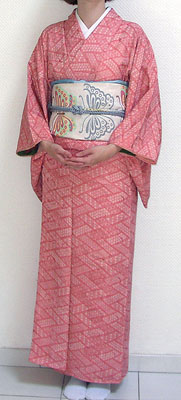Hanten and happi
July 18th, 2005 by AnnaGet wrapped up in Japanese stitchery is an article that describes some of the 61 hanten and happi currently on display at the Cincinnati Art Museum. It’s very well-written, as you can see from these excerpts:
Hanten coats were half the length of a kimono, fit snugly and had a flat collar. They were made of three layers of cotton dyed, stenciled or painted before being sashiko-stitched.
Sashiko stitching is a running stitch done by hand with three to four stitches to the inch.
“It pulled the fabric together in lines that are almost like tucks,” explains Amneus. “It created a kind of padding that helped protect the firefighters from falling debris.”
It also shortened the coat, which the artists creating the designs had to take into account. The coats were drenched with water to allow the firemen to get closer to the fire and could weigh as much as 84 pounds when fully soaked. Elaborate paintings like this reversed to a geometric design that identified a specific fire brigade. The artwork often repeated the complex tattoos that were common at the time.
The carp is a symbol of perseverance, determination and strength.
“Happi are wonderfully bold, graphic and straightforward,” says Amneus. They also are lighter since they are made of just one layer and are not quilted. Their designs make them walking billboards.
“They were first worn by male servants of samurai and had the symbol of the samurai on them,” says Amneus. “Then wealthy farmers and merchants and their employees wore them. They are still worn, some even have English words on them, and are like our T-shirts or jackets – something to toss on.”


